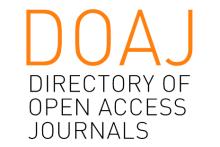Resource information
The nature of different activities in production, agriculture as well as distribution and consumption section, called as expansionist activities, largely influence the ability of the land. Production of consumable material, which is required for increasing population in various areas, and their attractions make it possible to earn more profit and it causes a significant pressure on soil and water resources and can threaten environmental pollution and human food security. A self-interested attitude on land resources has led to run short-term programs without considering the ecological capability of the land. These mentioned problems are, significantly intensified particularly in arid and semi-arid areas with severe limitations of water and soil quality and quantity. Therefore, land allocation based on ecological capability and self-purification indexes, used for land use planning, is an appropriate response to meet the deficiencies noted. This paper studies the agricultural capable lands based on land capability. The proposed study uses GIS software capabilities with application of the environmental ability evaluation model, as a holistic approach, to make sustainable development research in the region. The results indicate that suitable lands for agriculture in the whole area in different classes are widespread and with regards to dependency of more than 90 percent of people to agricultural activities, serious attention of authorities is required for providing the appropriate baseline and avoiding land use change to develop this activity.


